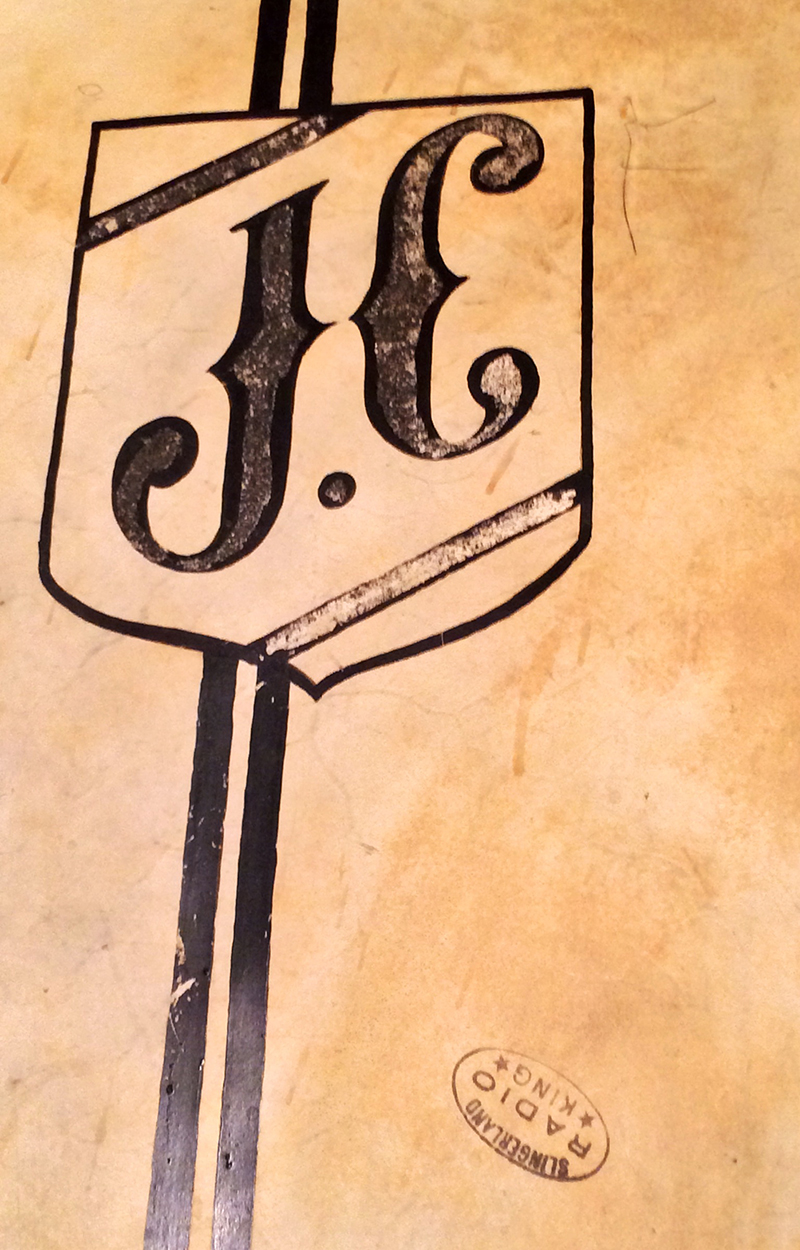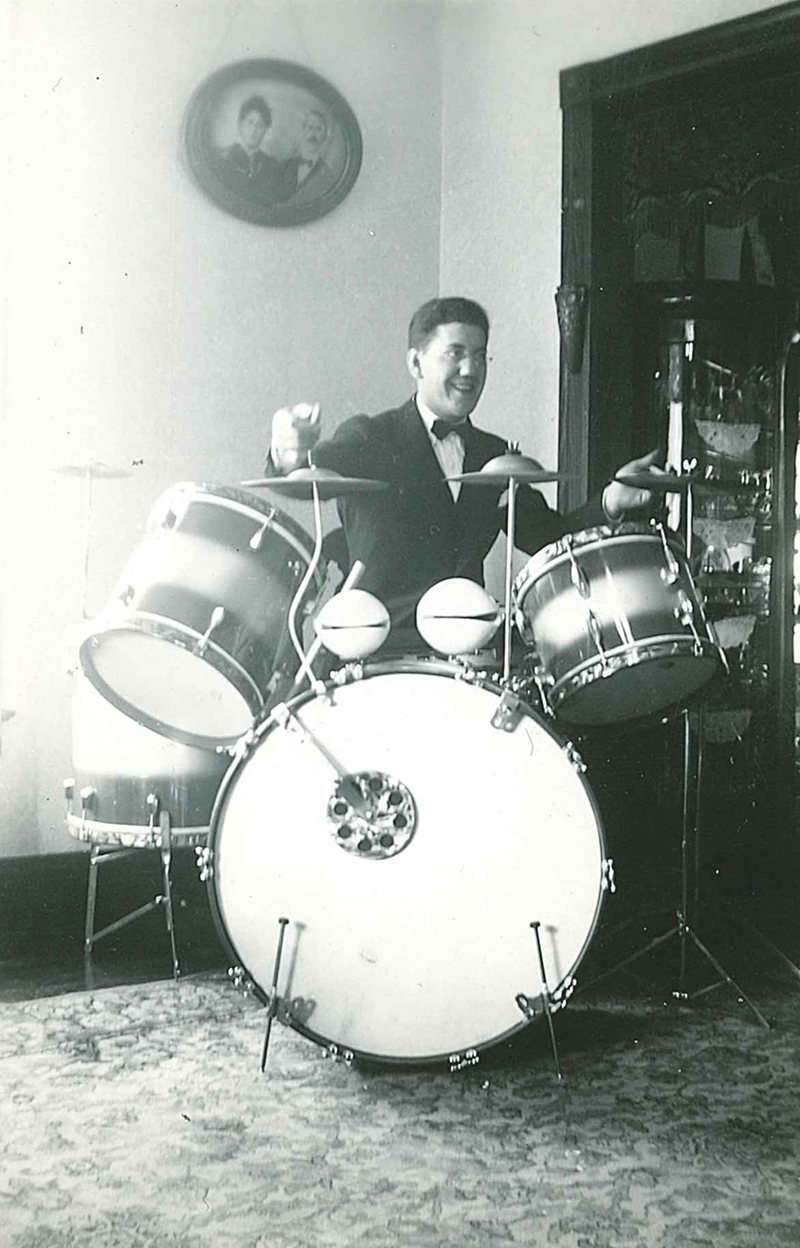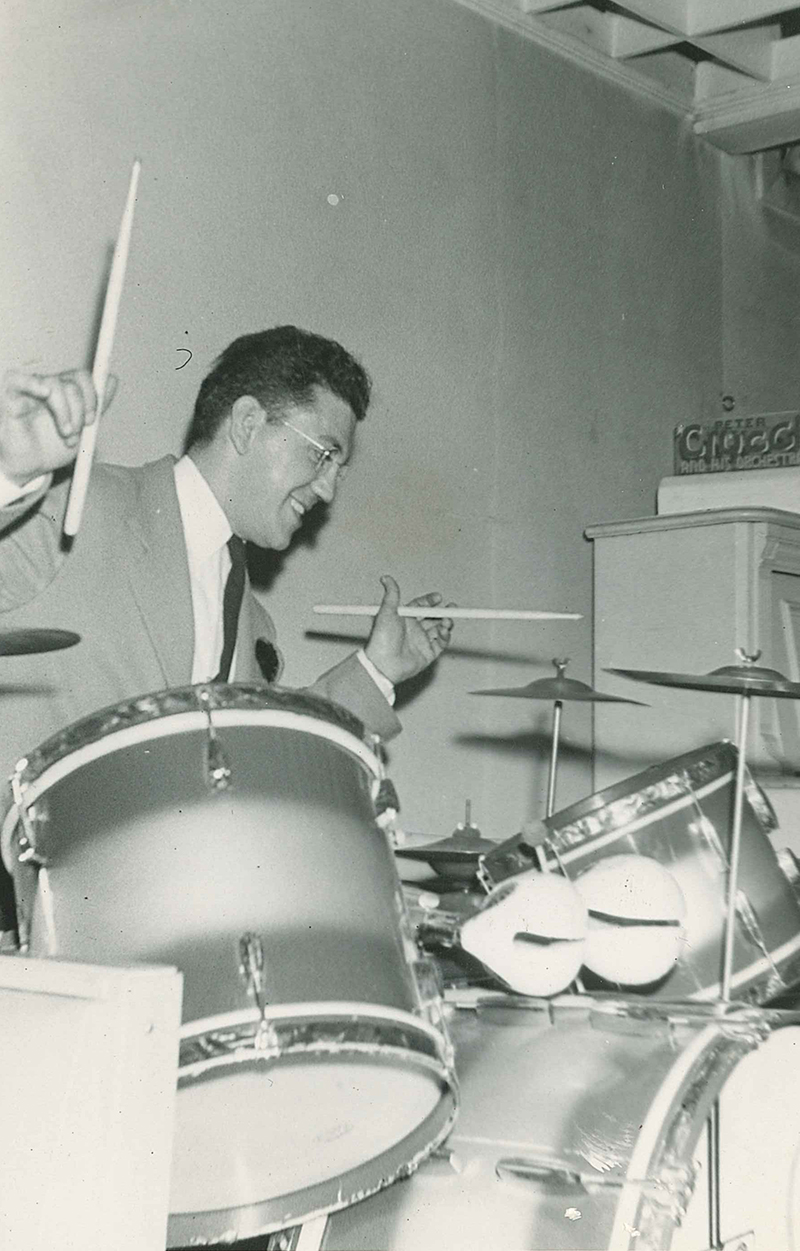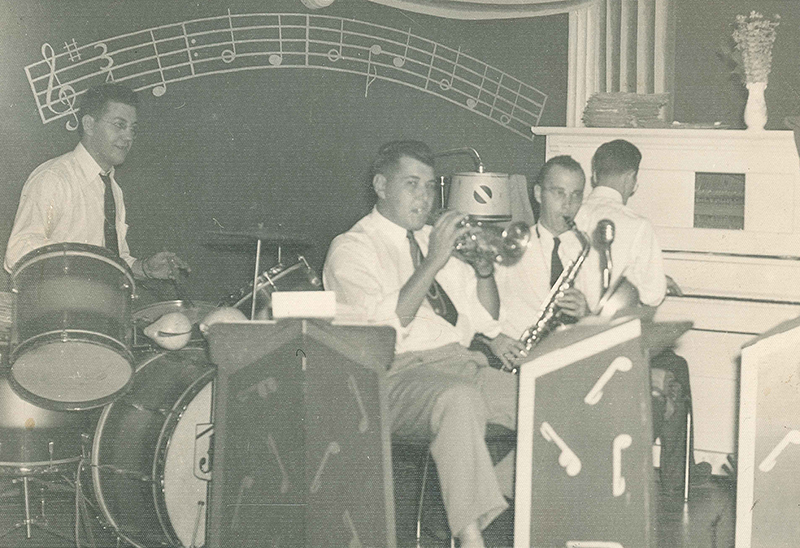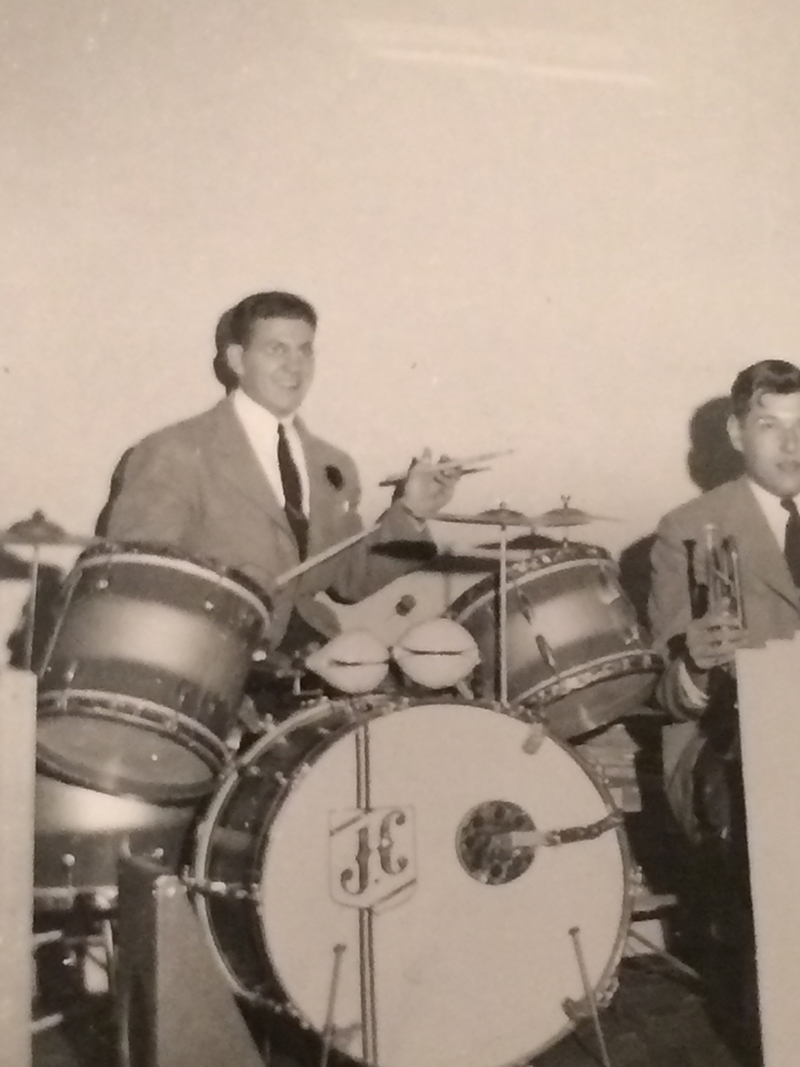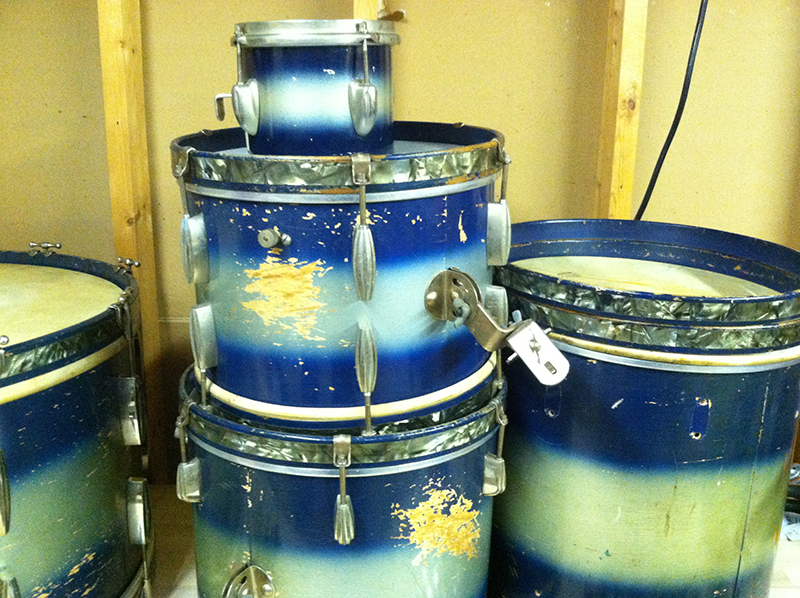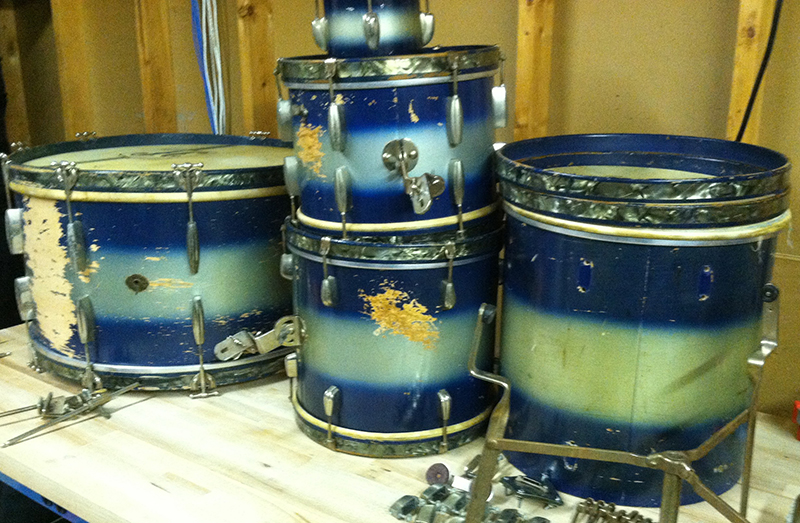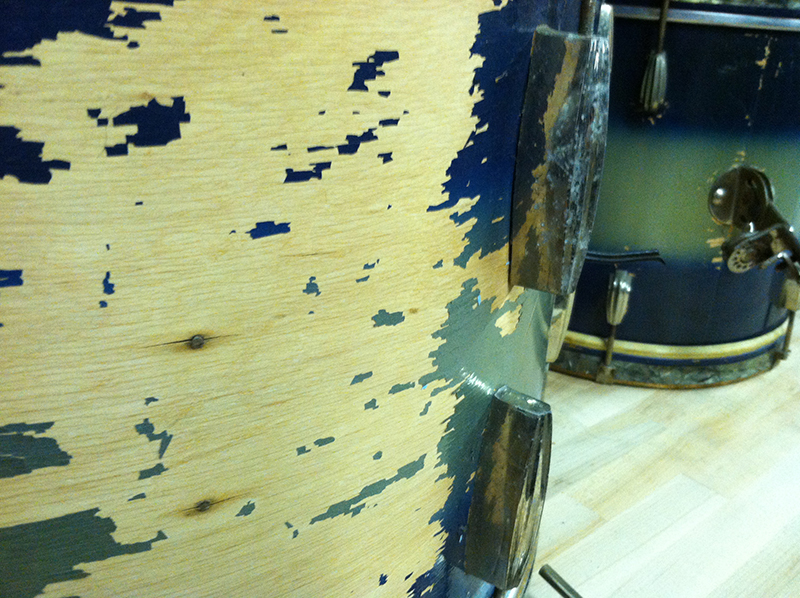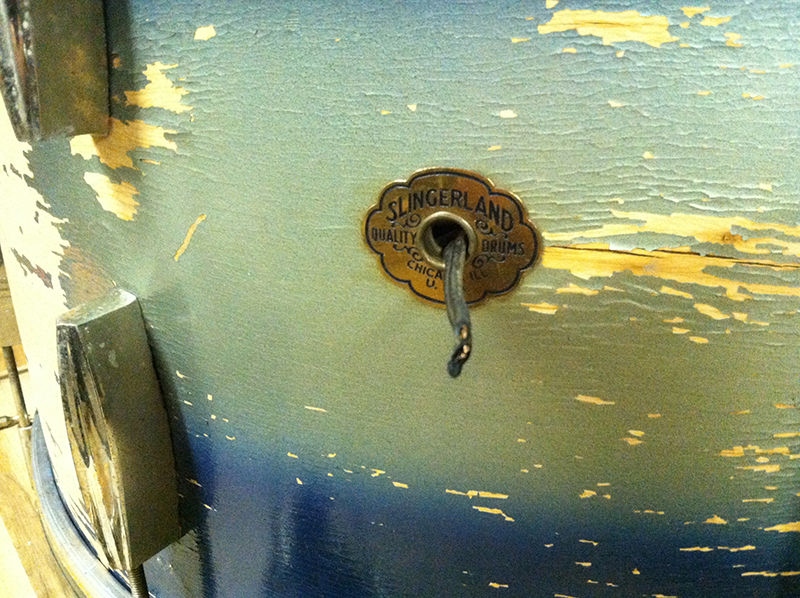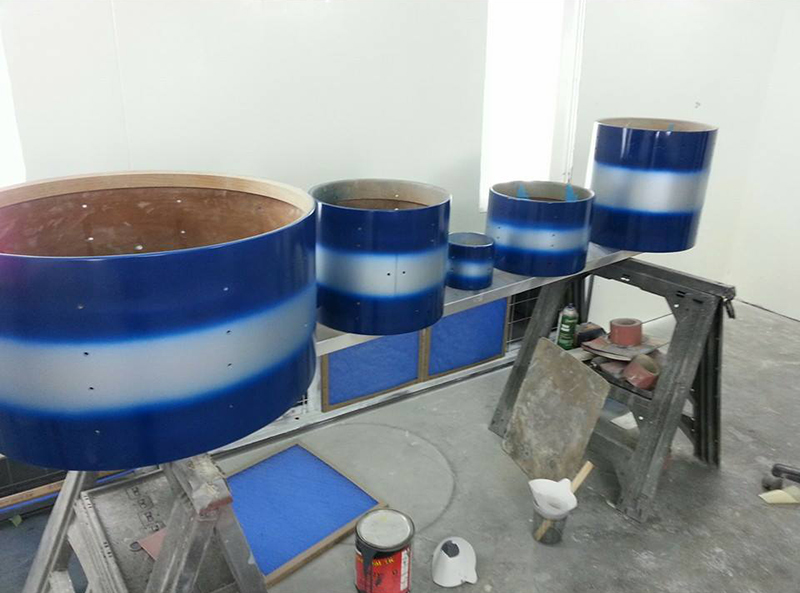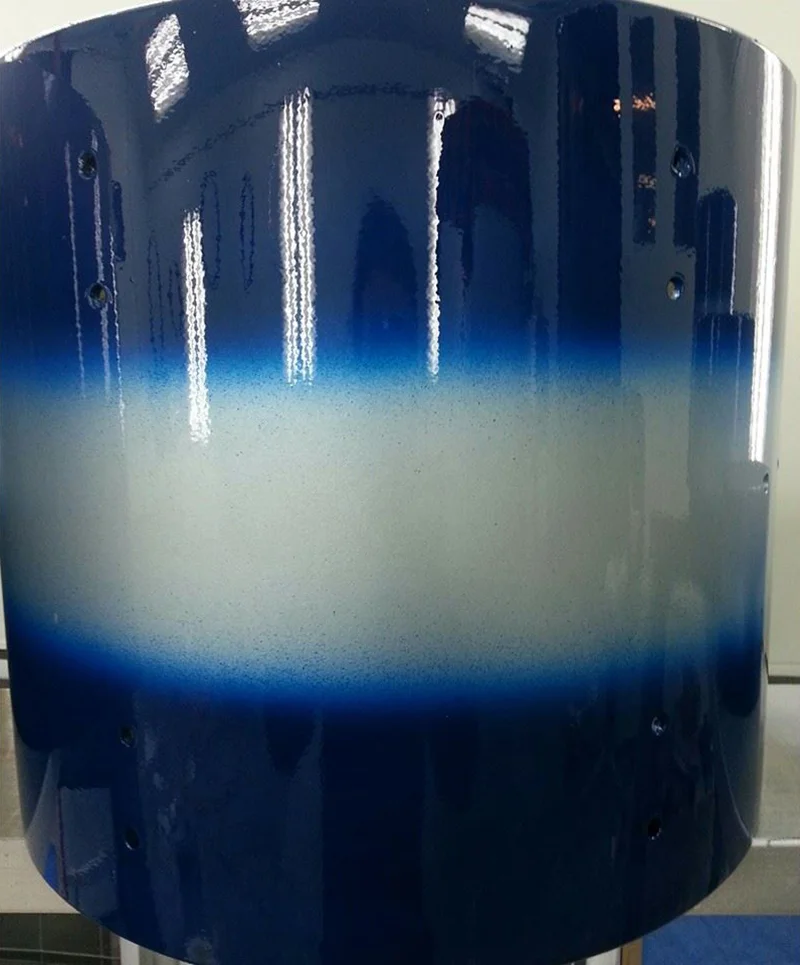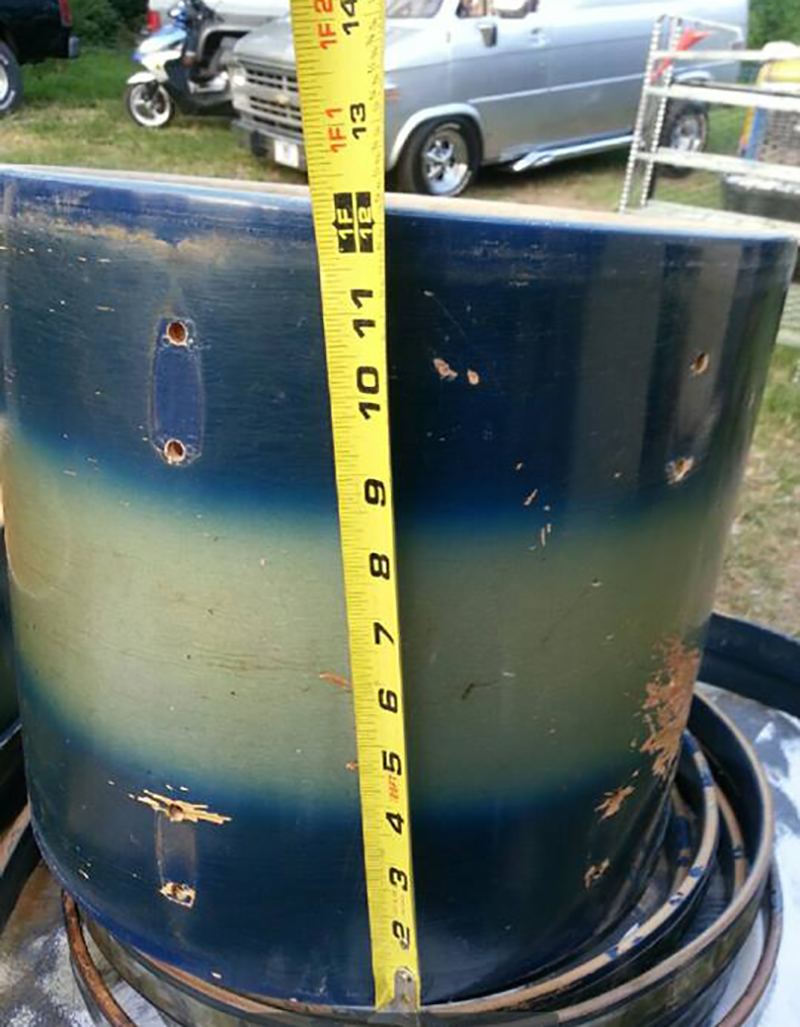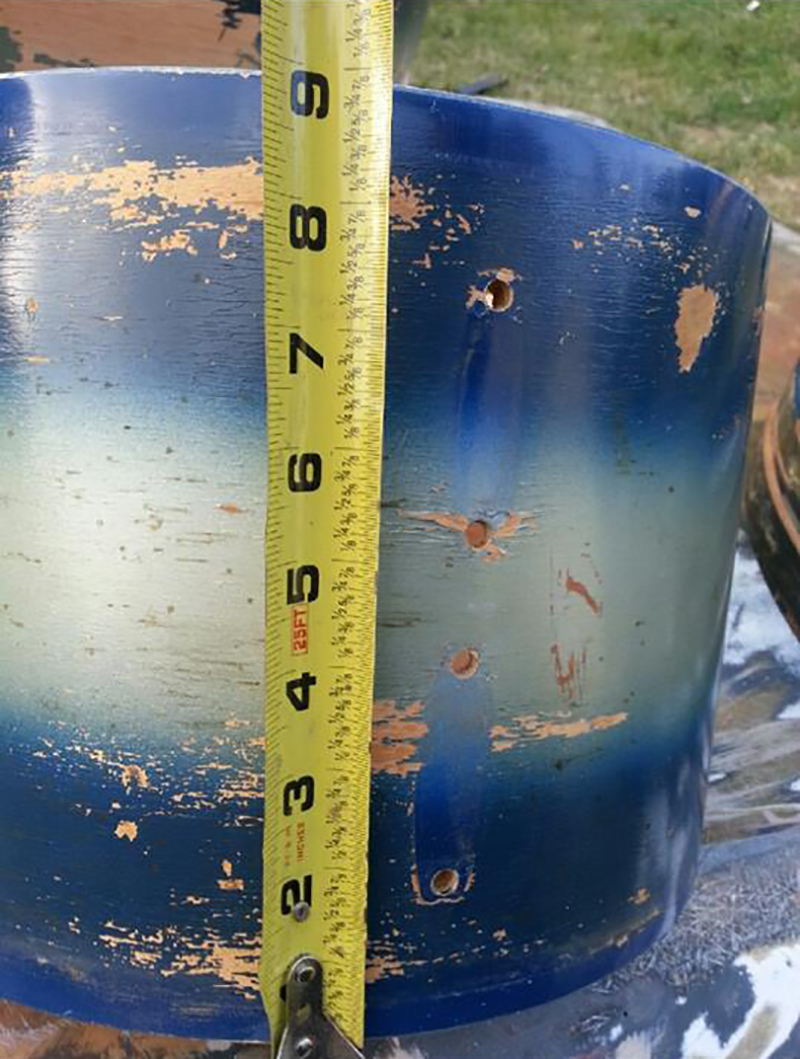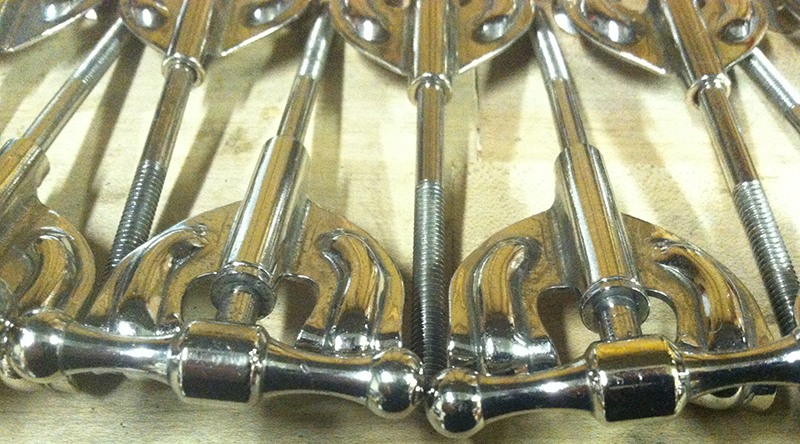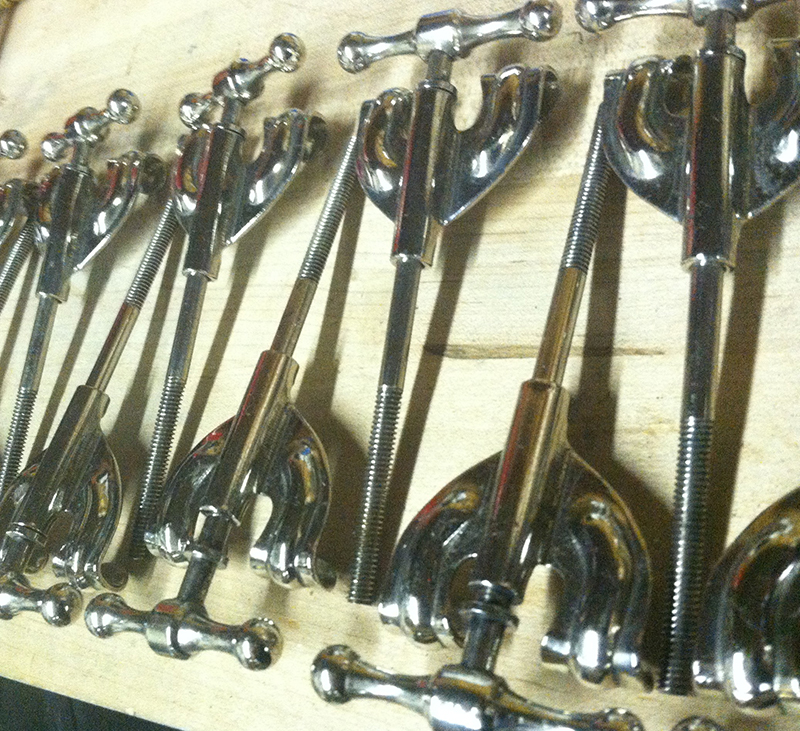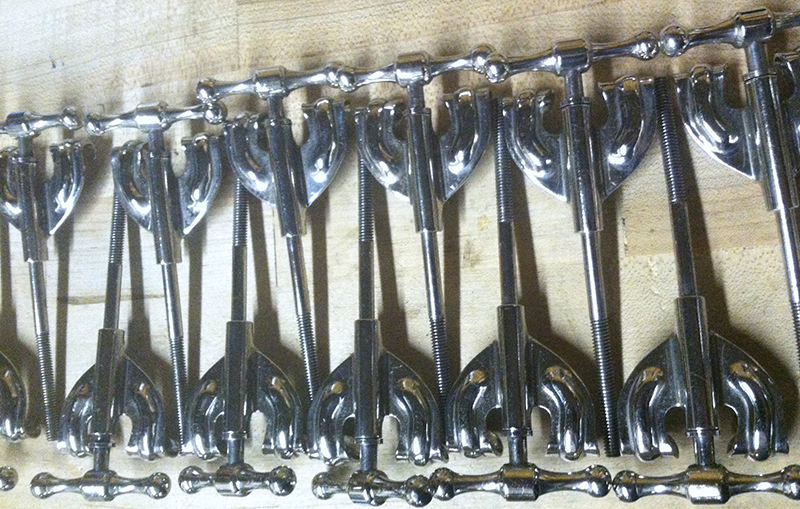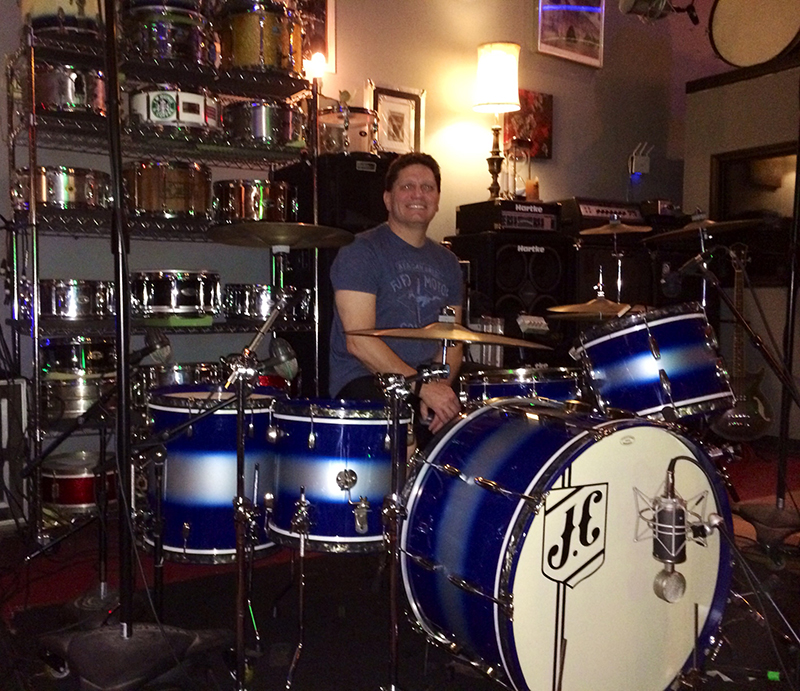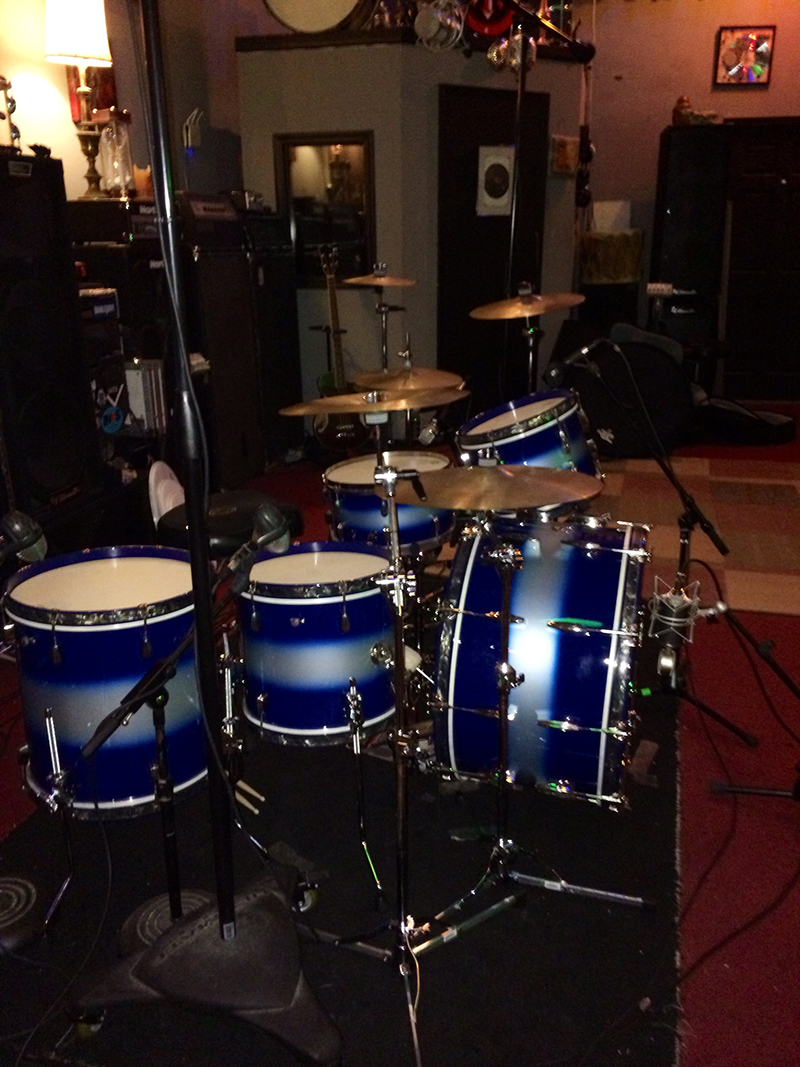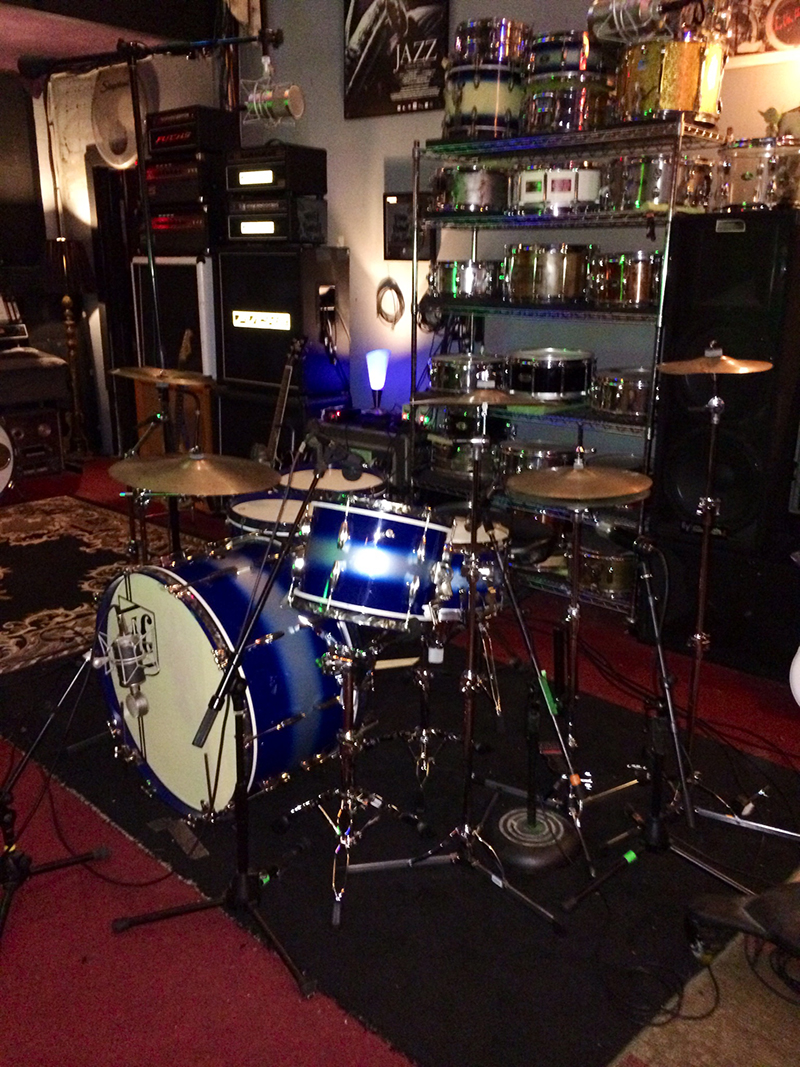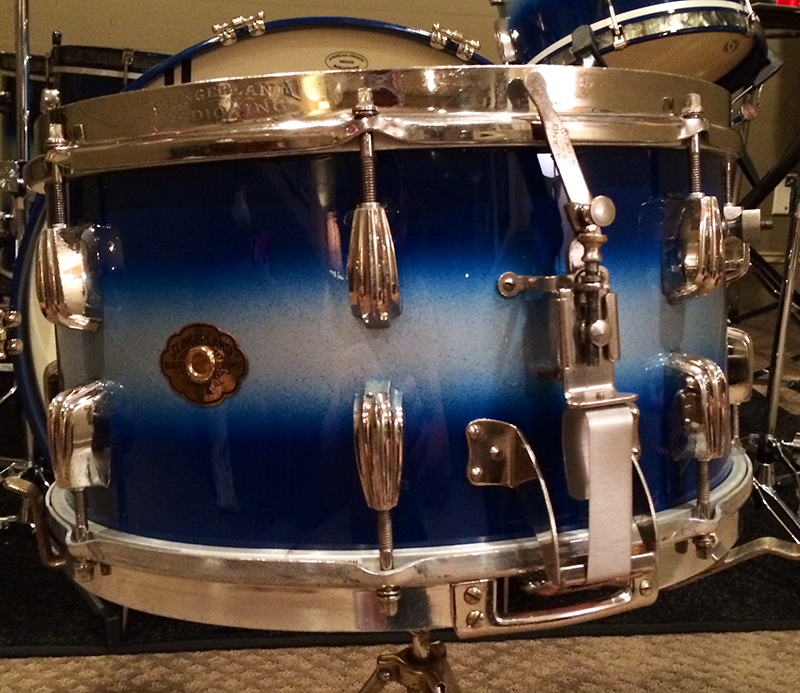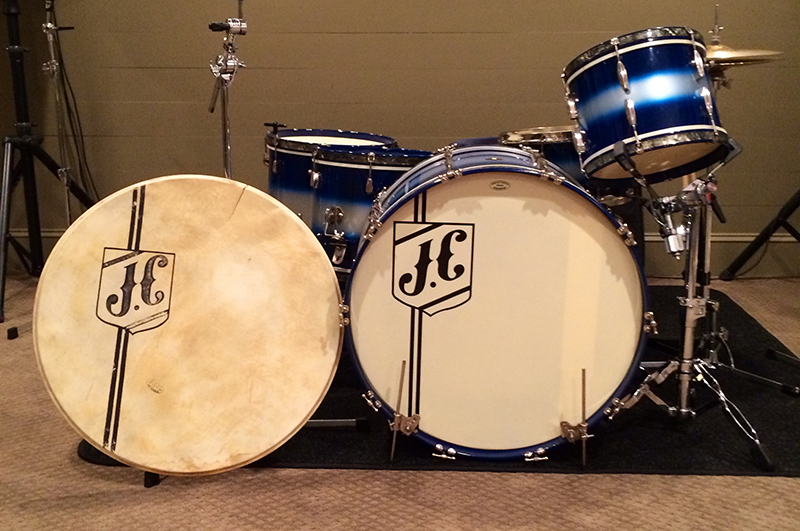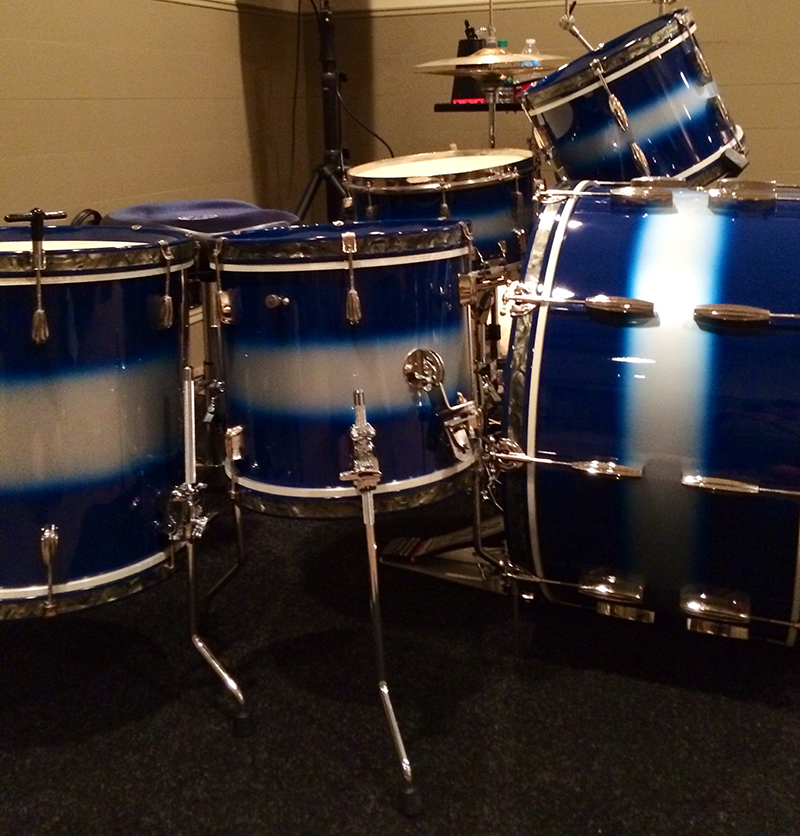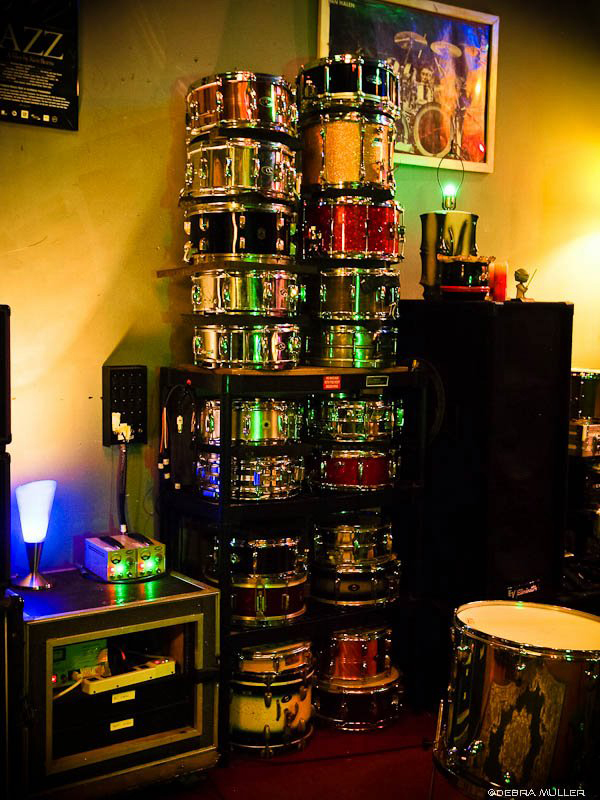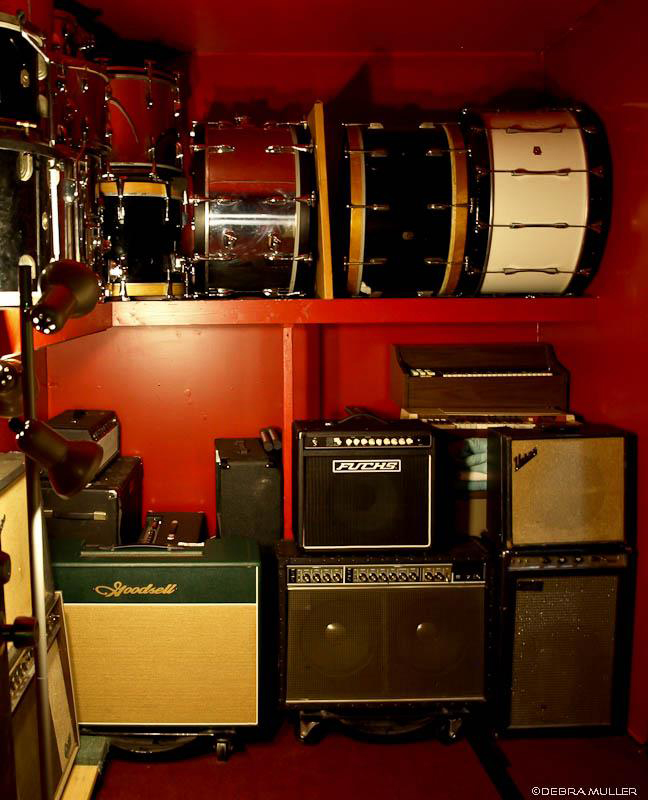I was scrolling through a vintage drummer Facebook group one day, and I came across a post from Joe Ciucci. Rather, I came across an open-mouth drool worthy video of his 1940 restored Slingerland Radio Kings…. Joe was just the guy attached to the post! I sent a message to Joe, and we struck up a conversation. Joe turned out to be as nice as his drums, and I offered to showcase the drums in Not So Modern Drummer. He took me up on the offer, and here we are today. Joe was instrumental in setting up our Nashville Drum Show trip to ATL Drum Collective, and if you came to the Nashville show, you couldn't have missed the Radio Kings in the vintage drum museum.
As NSMD writer Bob Campbell says – “Every drum tells a story.” Sure – vintage drums are great – but sometimes the story behind the drums is what makes the drum great, no matter its monetary value or place in history. That’s what makes vintage drums tick for me. In this case, Joe’s drums have hit the trifecta.
Here’s that story.
-Chris
Joe Ciucci, owner:
I am attaching scans of some pictures of my grandfather, Joe Ciucci, playing his drums. He bought them in 1940, traveling by train from Houghton MI, to the Slingerland plant. He apparently special ordered the drums, as they have wood hoops, the duco finish, and the black diamond inlay. He gave them to me in the summer of 1976, when I was 11, and this was my only set of drums until 2011.
It is actually a six piece kit, 14’ snare, 26” bass drum, and 13, 14 and 16 toms. The sixth drum is a 6’ “shot drum,” which mounts on a bracket on the floor tom. I literally have all of my grandfather’s drum gear: All of the original hardware, two sets of temple blocks, cowbells, woodblock, and many early Zildjian cymbals.
My grandfather was a great guy! He played drums from early childhood, until approximately 1970. He was a fill-in drummer for several big bands, and apparently played a few gigs with Benny Goodman in the 1940s. He started his own band, Joe Ciucci and Band, also played in the Peter Ciucci Band – Peter Ciucci was his twin brother on piano. On one trip to Chicago, perhaps in 1940-41, Gene Krupa, Buddy Rich and my grandfather each played this kit on the same day. I have a specific recollection of seeing a photograph of my grandfather sitting behind the kit, with Mr. Krupa and Mr. Rich standing on either side of my grandfather. Unfortunately, I cannot put my hands on this picture.
These Radio King drums remained stored at my grandpa Ciucci’s house, in storage at Ciucci’s Market, until he gave them to me in the summer of 1976. They remained at my parent’s home, until my wife and I moved to Atlanta in 1998. I played the drums approximately 5 times from 1998-2011, when I started playing drums again. I formed a band named Comrade Blue, with some friends, and now play in Comrade Blue and another band called Navajo Joe. My band Comrade Blue recorded our first EP in 2013 with Mike Froedge at Open Sky studio in Atlanta (more on Mike and the studio later), and with Navajo Joe, we just recorded our first single, also at Open Sky with Froedge. Please help us sell millions of copies - we have a bunch of kids to put through college and more drums to buy!
To preserve the Radio Kings, I chose to purchase a set of drums in 2011 (a DW kit) and have recently purchased a 1967 Ludwig Black Diamond Pearl kit, rather than play my grandfather’s “trap set.” (I call the Ludwig kit my Birthday kit, as the Ludwig kit is dated Oct 13, 1967 - which is the day I was born… so of course I had to purchase them).
My grandfather’s 1940 Radio Kings have been painstakingly restored to their original glory by Clint Coppel and Joel Perdue of The Atlanta Drum Collective, along with expert painter Phil Sims. I will defer to them on the restoration process, although, I must say it is abundantly clear that they take great pride, as they should, in the care and joy they brought to this restoration. I simply cannot thank them enough for their efforts (More on the restoration details in a little bit).
The Radio Kings were, almost immediately after being restored, taken to Open Sky Studio in Atlanta. We set them up, and played them to showcase them in what became an Aquarian Drumhead video! So, many thanks to legendary drummer Roy Burns and Chris Brady for offering me, which I quickly accepted, an Aquarian Artist Endorsement contract, due in large part to Mike Froedge (and an awesome set of drums). The video was a blast to make, and you can surely tell that Mike Froedge (also an Aquarian Artist) and Ernie Topran (our videographer and professional drummer) thoroughly enjoyed playing my family Radio Kings with the Aquarian drumheads. The Aquarian folks have done a masterful job of creating drumheads which recreate the sound and feel of the original Slingerland Radio King calfskin drumheads. We still have the original heads, as they were on the drums when we started the renovation project.
I would not sell my grandfather, Joe Ciucci’s Slingerland Radio Kings for all of the tea in China, but if Dave Grohl or Taylor Hawkins want to play them, they can play ‘em at my house or at Open Sky Studio. We may even let the “right drummers” rent them for recording; but they have to pass the “Respect the Radio King drum heritage” test!
Clint Coppel, restoration:
Here’s a little about our involvement on restoring Joe's Grandfather's Radio Kings.
Joe brought us the drums at ATL Drum Collective and the initial thought was to just clean the hardware, change the heads out and make the kit set up a little more modern in the usability/hardware department. The kit had the calf skin heads on the resonant side of all the drums (except the 6" drum, which is single headed) and had been last outfitted with Remo smooth white CS black dot heads on the batters of the toms and a Remo Clear CS black dot on the bass drum batter. Joe had taken the snare drum out before all of this and got it up and in playing condition, outfitted with new heads and Puresound Vintage wires.
At some point after we got the drums from Joe, he wondered about having the set re-sprayed and brought back to life. Everyone seemed against this at first, given the age and uniqueness of the set (I was even against the idea at first). I can't recall how many back and forth conversations we had, but eventually we got over that "hump" of should the drums be re-sprayed. I was at least sold on the idea after moving the drums and taking them apart in our workshop. Every time any of the drums were moved, paint flaked off and required a small dust pan to collect what flaked off. The 73ish year old paint was not getting any better and the drums had big rash spots of bare wood.
We came upon Phil Sims, who stripped and re-sprayed the kit from another drummer we knew who had had his kit recently re-done. Phil has been painting cars and motorcycles for years and was looking for more challenges versus the norm for what he had been spraying. We took the hardware off including the badges and air grommets and gave the shells to Phil to spray. We asked him to re-spray the shells in the same manner of dimension of the duco finish and color, but not in the dull fade hue that the blue had faded to. The shells were sprayed with a modern polyester based paint (car grade, and pretty much what every current high end drum manufactures uses) in contrast to the enamel paint originally used by Slingerland. The finish applied was now modern but retained the original vibe and provided more durability. Phil related to us during the process the lengths he went to get a surface of the Radio King shells where the paint would lay flat. The shells being 70+ years old had changed a bit due to wear and tear and as well as the slight change in the woods moisture levels (dependent on where they were stored over the years). He did have to fill some areas of the shells to achieve this.
Once Phil had sprayed the shells he brought them back to us for our review. We did go through each shell and inspect each drum to make sure no flaws or irregularities were present. Being all the drums except the snare drum and 6" drum had wood hoops top and bottom, we noticed Phil hadn't sprayed the insides of the hoops. Not being a drummer, he had thought these were not visible when on the drums. Phil did take the hoops back and spray these and re-do a few things we noticed with the shells. All-in-all, when we got the shells back from him, everything was top-notch. Even before he touched up the minor issues, everything looked spectacular. However, we just wanted everything as best it could be and made sure this was the case.
While all drums were away, we took care of the hardware cleaning. The metal fittings (lug casings, tension rods, clips, spurs, etc.) are nickel plated and had acquired 70+ years of grime that turned most of it to a flat satin dull look. To get the built up grime off the metal fittings, all metal fittings were soaked in a parts washer over a 24-48 hour period and sometimes parts were even re-soaked. I used Oil-Eaters cleaner degreaser (which is non-toxic) and mixed this with distilled water in the parts washer at a 5-1 ratio after a bit of experimenting with the water/solution ratio on other drum parts I had that were similar in plating. I had heard of others using Dawn dishwashing soap for projects such as this, but after using this product, I can say I am impressed. The parts washer after each load parts soaked had lots of dirt/grime left over in the bottom of the tank. The parts came out and regained quite a bit of shine to them.
After the parts were out and dried, the question was whether to just use a good metal polish and call it a day, or as it had lingered in the back of my mind, what would really make the hardware shine. I used Cape Cod cloths initially on the hardware, and while I liked the result, I still saw the potential that the nickel plating could have more shine to it. I tried out jeweler's rouge and a small buffing wheel on a whim, I had used a buffing wheel on larger chrome metal items in the past but nothing as small as drum hardware – and nothing nickel. After I had buffed the first few tension casings on the small buffing wheel, I was sold that this is what the hardware needed. Unfortunately, this meant a bit more work. Each part went through two stages on the buffing wheel: an additional cleaning with Tripoli compound and then a final go with Rouge for the "coloring" effect this stage is intended to do. Lastly, I went back over each part with the Cape Cod cloths for a final polish. So to give you an idea, this is 80 lugs, 60 tension key-rods, 20 T-Rods, 40 clips, 20 claw hooks, 4 bass drum spurs, 4 internal muffler brackets, 3 hoops (snare drum + 6" drum), 2 hoop mount brackets, 1 butt plate, 1 snare strainer, and actually all 160 of the tension casing mounting screws were all run through this process, all one at a time with the buffing wheel. Care had to be taken as buffing these parts with high speed wheel required a little attention so the wheel wouldn't throw parts across the room.
One of the other requests was to make the kit a bit more modern. The 16" floor tom actually had a cradle and no leg brackets. The 14" (and 13" tom) mounted off the bass drum hoops, which is incredible to think drums of the size and weight were mounted in this manner. A few ideas were tossed around and the last thing we wanted to do was drill any extra holes on this kit. Luckily for Joe's kit, Ludwig had come out with the Atlas Bracket recently, which just so happened to work with the tension casing hole spacing on the 16" and 14" toms. For those unfamiliar with this bracket, it combines being a mount for floor tom/tom-tom applications as well as being a tension casing all in one. We used 6 of these brackets as well as modern floor tom legs and the floor toms have a normal floor tom appearance and there was no issue with the tension rods working with these brackets. I won't go into detail the other applications we considered, but this ended up being the most streamlined way to modernize these two drums. As for the 13" tom, well it just gets put on a snare drum stand now. We did put the two clip mounts back onto the drums just so Joe didn't have another part to store or have the holes visible. The floor tom cradle has been retired though.
As far as the head selection, we recommend the Aquarian American Vintage series to Joe for the way they are manufactured; slightly over sized collar to fit older American Drums, and the coating is reminiscent of calf skin in look and has a nice warm tone. We outfitted the kit with American Vintage Medium weight (10-Mil) heads top and bottom and outfitted the bass drum with the American Vintage Medium heads with the felt strip factory pre-installed on both the batter and the resonant side. The drum heads went on with no issues and fit right and were tuned up and they sounded as good as they now looked, and vice-versa.
We had an informal unveiling at ATL Drum Collective this past May – and did go to lengths to not show the in progress or peaks to anyone before we unveiled the drums to Joe… for two reasons; I think the person getting the work done deserves to see it first once it is complete, and I did not want to spoil the “after” effect of the restoration by giving peaks or updates to anyone. I think it paid off well because the “before” was definitely in Joe's mind and the after was quite a good surprise.
I don't think I have ever witnessed someone more excited at the after on any project that I have completed than when Joe saw the drums completed. It was a long process and a bit longer than anticipated but well worth it.
After Joe got the drums back, he gave us some additional items to clean up, which included the original drum keys, the bass drum external muffler, the hi-hat stand, cymbal arm and mount, snare stand and cymbal stands, which all suffered the 70+ years of buildup of grime. I have just recently restored these items and unfortunately don't have photos of them, but they were on display with the kit at the Nashville Drum Show.
Mike Froedge, Open Sky Studio:
Aquarian has been with me through the opening of Open Sky Studio in Atlanta, GA, back in 2006 and through my time as a hired-gun drummer with Bloodsimple - touring all over the US, Europe and England. They’ve been with me while drumming for Zakk Wylde’s (Ozzy Osbourne’s former guitarist) Black Label Society, and with my current band The Dreaded Marco. And of course, on all the sessions I produce and play on at Open Sky Studio and elsewhere.
I’m a vintage drum enthusiast myself, and I do most of my recording sessions with my collection of amazing-sounding Slingerland chrome-over-wood drums from back in the day (I’m quite obsessed with them), and they’re equipped with a variety of Aquarian heads (the type depends on the need of the particular session) which consistently sound great in the studio. I’m happy that we have all been able to come together and bring some well-deserved attention to the unique and amazing history of Joe Ciucci’s amazingly restored Radio King set.
Here’s the video from that day in the studio.

